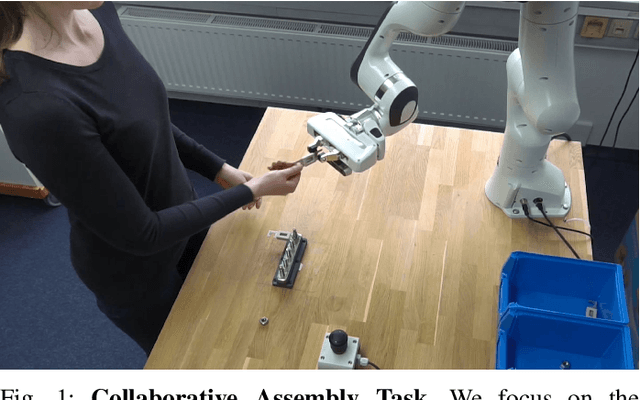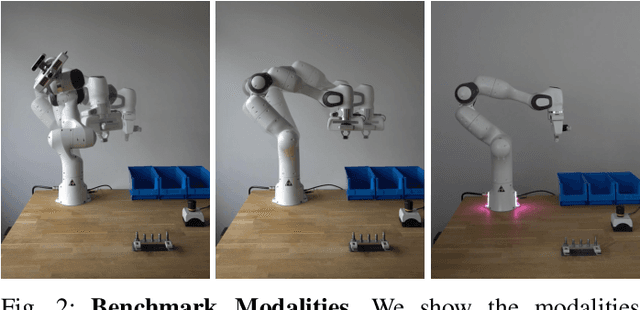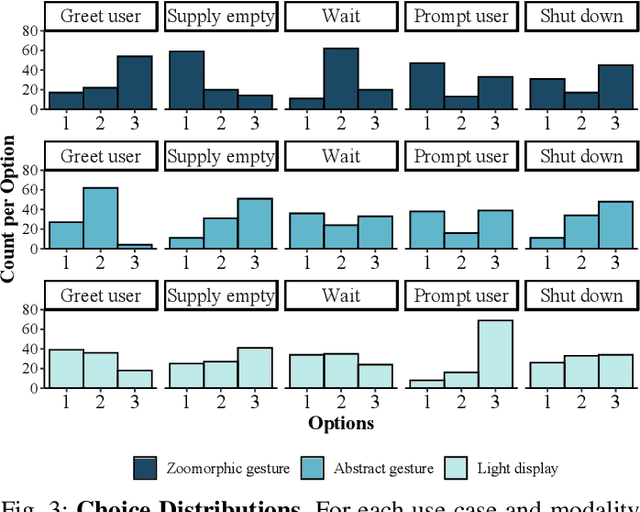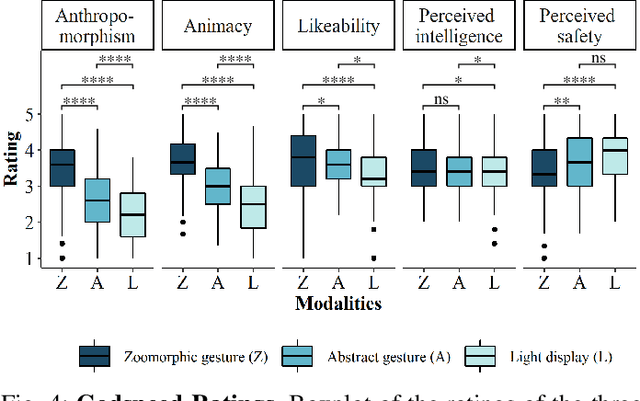Zoomorphic Gestures for Communicating Cobot States
Paper and Code
Feb 22, 2021



Communicating the robot state is vital to creating an efficient and trustworthy collaboration between humans and collaborative robots (cobots). Standard approaches for Robot-to-human communication face difficulties in industry settings, e.g., because of high noise levels or certain visibility requirements. Therefore, this paper presents zoomorphic gestures based on dog body language as a possible alternative for communicating the state of appearance-constrained cobots. For this purpose, we conduct a visual communication benchmark comparing zoomorphic gestures, abstract gestures, and light displays. We investigate the modalities regarding intuitive understanding, user experience, and user preference. In a first user study (n = 93), we evaluate our proposed design guidelines for all visual modalities. A second user study (n = 214) constituting the benchmark indicates that intuitive understanding and user experience are highest for both gesture-based modalities. Furthermore, zoomorphic gestures are considerably preferred over other modalities. These findings indicate that zoomorphic gestures with their playful nature are especially suitable for novel users and may decrease initial inhibitions.
 Add to Chrome
Add to Chrome Add to Firefox
Add to Firefox Add to Edge
Add to Edge